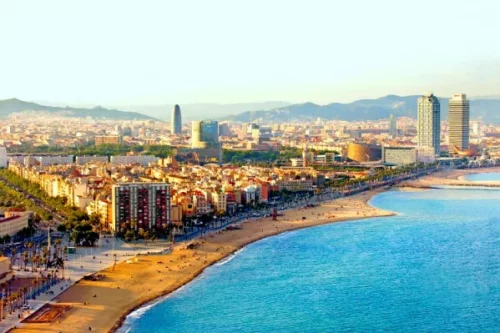

The Spanish real estate market is consolidating its recovery cycle in the residential segment and in a clear upward phase in the commercial segment.
Residential demand will continue to grow to levels of 420,000 and 450,000 homes in 2016 and 2017 respectively (compared to 367,000 in 2015), driven by the improvement in employment, reduced financing costs and the greater attractiveness of housing as an investment .
The combination of greater demand and very limited supply in large cities will allow an increase in average prices in 2016 and 2017 of close to +3% per year, which could reach +5% in Premium locations. This improvement in prospects will extend to the promotion of new housing, which will experience a new awakening in 2016 in light of the rise in construction permits in 2015, provided that the political context does not lead to a deterioration in confidence.
Home sales will continue to gain momentum during 2016.
Despite the fact that the all-time highs are still a long way off, this does not mean that we are not facing a scenario of growth in home sales, which may be boosted by the following factors:
Expansive cycle and employment improvement
The Spanish economy will grow during 2016 at a rate of more than +2.5%, which will allow the positive trend of the labor market to be maintained in the coming quarters. Although the pace of job creation slowed down in the fourth quarter of 2015, the reduction in the unemployment rate to 20.9% compared to 26.9% in the first quarter of 2013 and the increase in the number of employed by 525 thousand people (of which 171 thousand have permanent contracts) can be a catalyst for the demand for housing.
Reduced financing costs
The context of low interest rates is a new normal that is here to stay, at least until the end of 2017. The twelve-month Euribor will remain at levels close to 0% during 2016 and credit access conditions will continue to improve.
Returns against alternative investments
he gross profitability for housing rental stands out positively when compared with other investment alternatives that are offering returns close to 0% such as deposits or long-term fixed income. The absence of investment alternatives (except variable income) and the absence of inflation set up a market context in which investment in housing can provide a gross return close to 4.0%.
“Cultural” tendency to purchase
The proportion of houses that are owned and used in Spain (78.8%) is the highest of the neighboring countries and significantly higher than the average for the Eurozone (67.7%). Consequently, property will continue to be the dominant alternative in a scenario of economic recovery.
In short, we maintain our estimates of housing demand at 420,000 units for 2016, which would imply a growth of +6.5% compared to 2015.
Purchase-sale transactions in the province of Barcelona have increased by 17.2% up to the month of August compared to the same period in 2015. This places the province of Barcelona above the national average, located at 12 %.
Pedralbes (Les Corts District) and Paseo de Gracia (l’Eixample District) are the prime areas of the city and where the highest prices per square meter are recorded.
In Barcelona, a growth of the residential market is outlined in all its neighbourhoods. To highlight, Glòries, Nueva Diagonal, Sagrada Família, among others thanks to 22@ in the Poblenou area.
The Sarrià-Sant Gervasi district is also relevant, specifically the Pedralbes and Galvany neighborhoods, where the smallest flats will increase in value thanks to the reactivation of neighborhood commerce.


to save your favourite homes and more
Enter your email address and we will send you a link to change your password.